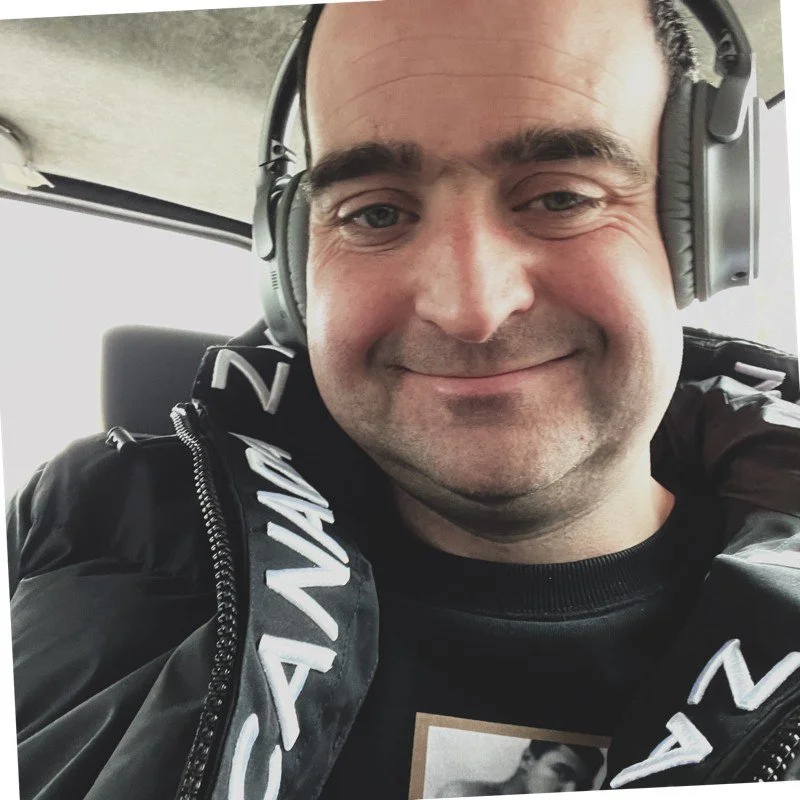Introduction
What are the mental health risks for middle managers?
How can peer support programs help reduce suicide at work?
What lessons can other industries learn from Australia's MATES in Construction model?
How can workplaces move beyond mental health awareness to real culture change?
In this episode, we explore one of the most urgent yet often overlooked crises facing high-risk industries: suicide in construction. Our guest, Sebastian Ison-Jacques, brings a powerful blend of personal experience, academic research, and sector insight to this critical conversation. From digital construction to workplace mental health, Seb’s mission is to expose what’s broken and help build something better.
This episode takes us from the UK to Australia, drawing lessons from frontline workers, data gaps, and innovative programs like MATES in Construction. We also focus on how middle managers in construction often face immense pressure, caught between demands from the top and struggles on the ground, they’re expected to champion mental health initiatives while receiving little support themselves, leaving them squeezed, overstretched, and too often overlooked.
As mid-level managers rise through the ranks in construction, they often lose their social circle -- no longer seen as “one of the guys”-- while navigating a blame culture where fingers are quick to point, leaving them isolated, under-supported, and burdened with the expectation to lead the mental health movement without a safety net of their own.
Call to action to industries: Build partnerships with mental health experts and workplace policy change for worker wellbeing.
About Sebastian Ison-Jacques
Seb is a digital construction professional and emerging mental health researcher in the UK. After his own experiences with depression, job loss, and substance misuse, Seb’s thesis on suicide in construction turned into a calling. His research compares UK and Australian strategies for suicide prevention and highlights the need for deeper, data-informed, human-centered approaches in industry. He is now an outspoken advocate for sector-wide change, especially for those in the trades and middle management who often go unseen.
LinkedIn
sebastian.ison-jacques@mail.bcu.ac.uk
A Comparative Investigation into Suicide within the Construction Industry: UK and Australia Perspectives
Show Notes & Links
Topics We Cover:
Seb’s personal journey and what drew him to suicide prevention
Eye-opening stats: 73% of UK tradespeople have experienced mental health struggles
The concept of “The Lost City” and the visual impact of suicide loss
Key psychosocial hazards in construction (e.g., blame culture, late payments, job insecurity)
Comparing UK and Australian suicide prevention strategies
What other industries (healthcare, education, emergency services) can learn from construction
Peer support, systemic change, and why data matters
Why technology isn’t the only answer, and why human connection still leads the way
Referenced Research & Initiatives
Resources
On the Tools: https://www.onthetools.tv/home/mental-health-white-paper/
MATES in Construction (Australia): https://mates.org.au
MATES in Mind (UK): https://www.matesinmind.org
Construction Sport: https://constructionsport.com/
Research
AISRAP Report (2006): Griffith University
Stevenson/Farmer Report (UK): “Thriving at Work”
Campbell, M. A., & Gunning, J. G. (2020). Strategies to improve mental health and well‑being within the UK construction industry. Management, Procurement and Law, 173(2), 1–11. https://doi.org/10.1680/jmapl.19.00020
Gullestrup J, King T, Thomas SL, LaMontagne AD. Effectiveness of the Australian MATES in Construction Suicide Prevention Program: a systematic review. Health Promot Int. 2023 Aug 1;38(4):daad082. doi: 10.1093/heapro/daad082. PMID: 37647522; PMCID: PMC10468011.
Milner, A., Maheen, H., Currier, D. et al. Male suicide among construction workers in Australia: a qualitative analysis of the major stressors precipitating death. BMC Public Health 17, 584 (2017). https://doi.org/10.1186/s12889-017-4500-8
Leitao S (2017) Psychosocial, health promotion and safety culture management – are health and safety practitioners involved? Safety Science 91: 84–92, https://doi.org/10.1016/j.ssci.2016.07.002.


